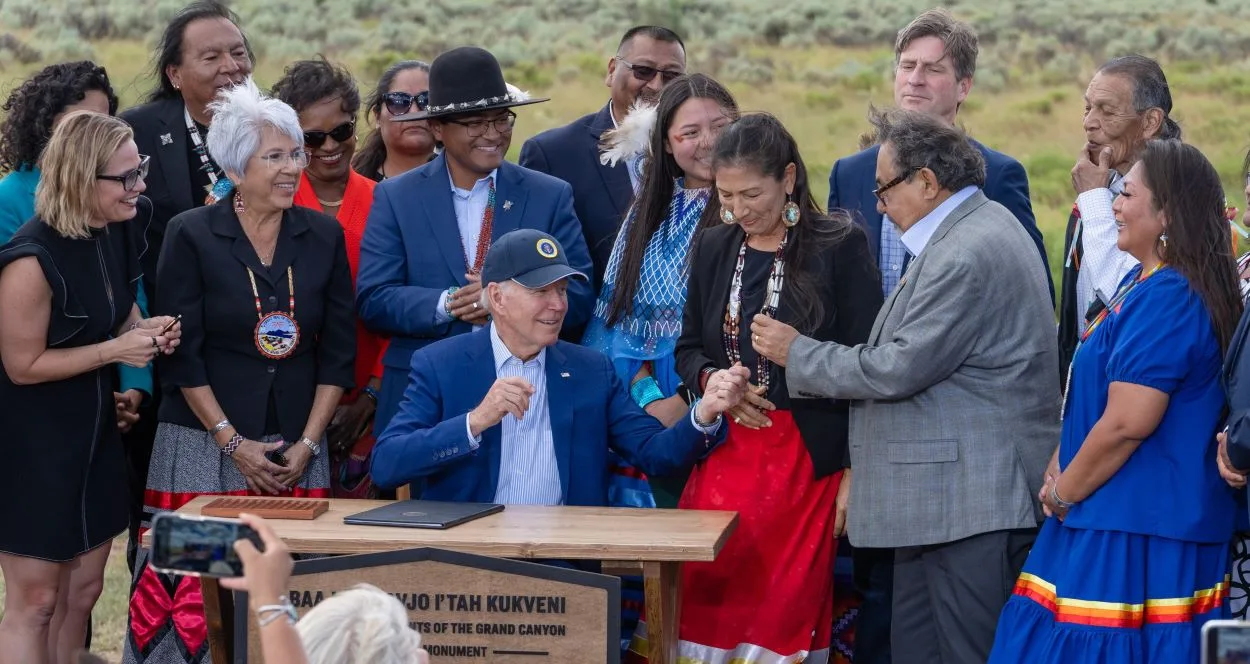In a landmark move, US President Joe Biden pronounces the Grand Canyon region a national monument during his Arizona visit on Tuesday.
The momentous declaration culminates in the prolonged advocacy of Native American tribes and environmental champions to safeguard this monumental terrain.
A Tribute to Native American Tribes
Encompassing a sprawling area of about 1,562 square miles (4,046 square kilometres) adjacent to the Grand Canyon National Park, this will be the fifth monument designation under Biden’s leadership, reinforcing his dedication towards environmental preservation.
The new monument, christened “Baaj Nwaavjo I’tah Kukveni”, pays tribute to the rich legacy of the Havasupai and Hopi tribes. The name beautifully encapsulates the essence of the region, with “Baaj Nwaavjo” meaning “where tribes roam” – an ode to the Havasupai tribe’s profound connection to the land, and “I’tah Kukveni” translating to “our footprints”, signifying the Hopi tribe’s deep-rooted ancestral bond.
Strengthening Indigenous Collaboration
US Interior Secretary Deb Haaland, being the first Native American to hold a cabinet position, emphasized that this designation ushers in a new chapter of cooperation with indigenous groups. Besides the ecological and cultural significance, President Biden’s decision has considerable political implications.
Since Arizona played a crucial role in Biden’s 2020 victory, this gesture might fortify his standing in this pivotal state, potentially influencing his chances in the 2024 reelection campaign.






